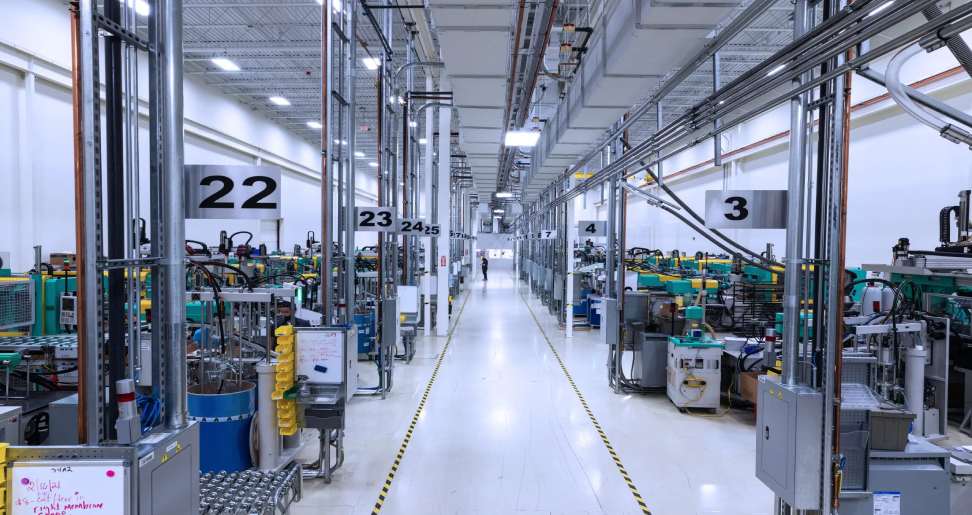Over-molding, a manufacturing process that involves molding one material onto an existing substrate, has emerged as a transformative force in the production of modern products.
By combining the properties of different materials, over-molding offers unparalleled design flexibility, enhanced functionality, and improved product durability.
Overmolding, a manufacturing process that involves molding one material onto an existing substrate, has emerged as a transformative force in the production of modern products. This innovative technique has redefined the possibilities of product design, functionality, and durability. By seamlessly combining the properties of different materials, over-molding offers a multitude of advantages that have propelled it to the forefront of manufacturing.
The Over-Molding Process
Over-molding is a manufacturing process that involves molding one material onto an existing component or substrate.
This technique combines the properties of different materials to create a single, unified product.
The Process
Substrate Creation: The base component, often referred to as the substrate, is manufactured using a suitable process such as injection molding, metal casting, or 3D printing. It forms the foundation for the overmolded part.
Mold Preparation: A mold is designed to accommodate both the substrate and the overmold material. The mold must accurately represent the desired shape of the final product.
Material Injection: The overmold material, typically a thermoplastic or thermoset polymer, is melted and injected into the mold cavity containing the substrate.
Bonding: The molten overmold material encapsulates the substrate, creating a seamless bond between the two materials.
Cooling: The assembly is cooled to solidify the overmolded material.
Ejection: Once cooled, the finished part is ejected from the mold.
Revolutionizing Product Design
The die casting manufacturers in China follow the steps and revolutionize the product design.
Over-molding has redefined product design possibilities by offering:
Enhanced Aesthetics: Combining materials with different colors, textures, and finishes creates visually appealing products.
Improved Ergonomics: Soft-touch overmolds enhance grip and comfort, leading to improved user experience.
Functional Integration: Combining materials with varying properties allows for the integration of multiple functions into a single component.
Cost Reduction: Over-molding can simplify assembly by combining multiple parts into one, reducing labor costs.
Durability Enhancement: By combining materials with complementary properties, over-molding can significantly improve product lifespan.
Industry Applications
Over-molding has found widespread application across various industries:
Consumer Electronics: Enhancing grip, durability, and aesthetics of mobile phones, gaming controllers, and other devices.
Automotive: Creating soft-touch steering wheels, gear knobs, and interior components for improved comfort and safety.
Medical Devices: Producing ergonomic and durable medical instruments with enhanced grip and functionality.
Sports Equipment: Improving the performance and durability of sports equipment through customized grips and shock-absorbing materials.
Industrial Components: Enhancing the functionality and lifespan of tools, handles, and equipment.
Overcoming Challenges and Future Trends
While over-molding offers numerous advantages, it also presents challenges such as material compatibility, mold design complexity, and process control. Advancements in materials science, mold technology, and automation are addressing these challenges and expanding the possibilities of over-molding.
Future trends include:
Advanced Material Combinations: Integrating conductive, biocompatible, and smart materials into overmolding.
Multi-Shot Over-Molding: Injecting multiple materials sequentially for complex components.
In-Mold Decoration: Integrating decorative elements directly into the overmold.
Micro-Injection Over-Molding: Producing miniature components with intricate details.
Over-molding is poised to play an increasingly important role in shaping the future of manufacturing, as it continues to drive innovation and enhance product performance.
Have A Look :-
- Who Is Darvin Ham? – Darvin Ham Age, Lifestyle, Biography
- Hedon Texist Net Worth: The Rising NBA Star To Look Out For!
- Julian Newman: Beyond the Hype, Lies the Height of Determination
Feature Image Source: https://tinyurl.com/bdf3fd64


amoxicillin cheap – oral combivent buy ipratropium tablets
Your comment is awaiting moderation.